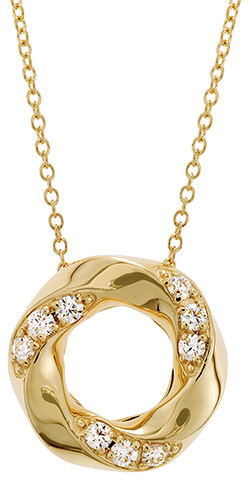|
Cover
Professor Turned Jeweler
Sociologist and jeweler Alexander Romm Rysman applies both skills at Romm Diamonds in Brockton, Massachusetts.
By Joyce Kauf
 |
| Hearts On Fire |
“I sell both a product and an experience where we treat everyone the same, whether they are buying a diamond ring or a charm,” says Alexander Romm Rysman, the sociology professor-turned-jeweler. With a retail philosophy rooted in his academic training, Rysman applies the finer points of both disciplines as the third-generation owner of Romm Diamonds in Brockton, Massachusetts, which features designer and fashion jewelry and watches.
Founded by Alexander Romm, Rysman’s grandfather, in 1900, the original Romm & Co. was located in downtown Brockton, about an hour’s drive south of Boston. The family traces its heritage to 1700s Russia. It was this tradition that lured Rysman back in 1986, after previously earning a PhD at New York University and teaching sociology at Northeastern University for ten years. In 1993, he oversaw the store’s move to the suburbs, an event that challenged some of Rysman’s core beliefs about society.
As factories disappeared, Brockton’s once bustling downtown shared the same fate of other industrial cities in the Northeast, plagued by unemployment and crime. “We were the anchor — and the oldest store — in downtown,” Rysman explains, noting that the store had been there for 93 years. But Main Street was no longer a viable retail destination. “People weren’t shopping; they were afraid to be seen with our bags.” While recognizing the business imperative of following his customers to the suburbs, Rysman, the sociologist, remains critical of how the poor are “demonized” and given few opportunities to earn a living wage — let alone purchase jewelry.
Renamed Romm Diamonds, this freestanding store in a strip mall is located adjacent to a major highway. “The entire area has spread out so that essentially we’ve become a suburb of Boston,” Rysman points out. As a result, his customer base has also expanded, but he cites the bridal customer and 40-to-60-year-olds as primary clients.
The influence of Rysman’s socioeconomic philosophy is also evident in his desire to create a “level playing field” between the customer and salesperson. “In a standard jewelry business, the salesperson’s goal is to get the customer to pay as close to full retail as possible. But this sets up a kind of zero-sum game that essentially leads to antagonism between the customer and salesperson,” he explains. As a result, Rysman implemented a “one-price” policy. “We don’t mark down and we don’t negotiate,” Rysman says, adding that the latter has become “increasingly rare.” While prices are “not necessarily” full retail, they are “competitive” with other jewelry stores in the area. “When prices are fixed, the salesperson is happy when the customer finds something he or she is happy with — that’s the definition of a successful sale.”
Rings, earrings and pendants are Rysman’s top-selling categories. Bridal is strong, with an average center stone of 1 carat. He notes that estate has gained in popularity, but colored gemstones are “not nearly as strong as a decade ago.” Rysman places a great deal of emphasis on cut and cites Hearts On Fire as a key supplier in the designer classification, especially for its ideal-cut melee. “Every 2-pointer is cut to the same proportions as a 1- or 2-carat stone,” he adds. GN Diamond, Roberto Coin and Mark Schneider are among other top sellers, as is Hasenfeld-Stein, which Rysman cites for the “consistency” of its cutting. Rysman singles out quality as the most important criteria for selecting a designer, followed by value. Emphasizing that there is a lot more to fine jewelry than just stones, he states, “I am very critical of diamond dealers who set very fine diamonds in cheap castings and think they are in the jewelry business.”
Large picture windows entice customers to enter the 2,750-square-foot store, of which 1,950 square feet is selling space. The entire right wall is devoted to bridal. Custom cherry wood display cases arranged at angles add a more contemporary ambience. Rysman made the cases lower than standard height because he believes it allows clients to get a better view of the jewelry. It is not the only store feature that was designed to reflect Rysman’s customer-focused attitude. Lighting fixtures of gold-toned columns cast a gentle glow. “They’re softer — like candlelight — and more flattering to women,” says Rysman.
“We have been in operation for more than 100 years,” Rysman points out, attributing that longevity to their consistency of quality and value. Yet, as both a jeweler and sociologist, Rysman understands the challenges facing the industry. “We have to create demand for our products even as we are threatened by radical transformations in lifestyle and economics.”Article from the Rapaport Magazine - August 2016. To subscribe click here.
|
|